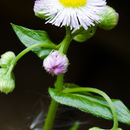fr
noms dans le fil d’Ariane


Erigeron philadelphicus (lat. Erigeron philadelphicus) - mürəkkəbçiçəklilər fəsiləsinin xırdaləçək cinsinə aid bitki növü.
Erigeron philadelphicus (lat. Erigeron philadelphicus) - mürəkkəbçiçəklilər fəsiləsinin xırdaləçək cinsinə aid bitki növü.
Planhigyn blodeuol o deulu llygad y dydd a blodyn haul ydy Amrhydlwyd America sy'n enw gwrywaidd. Mae'n perthyn i'r teulu Asteraceae. Yr enw gwyddonol (Lladin) yw Erigeron philadelphicus a'r enw Saesneg yw Robin's plantain.[1]
Daw'r gair "Asteraceae", sef yr enw ar y teulu hwn, o'r gair 'Aster', y genws mwyaf lluosog o'r teulu - ac sy'n tarddu o'r gair Groeg ἀστήρ, sef 'seren'.
Planhigyn blodeuol o deulu llygad y dydd a blodyn haul ydy Amrhydlwyd America sy'n enw gwrywaidd. Mae'n perthyn i'r teulu Asteraceae. Yr enw gwyddonol (Lladin) yw Erigeron philadelphicus a'r enw Saesneg yw Robin's plantain.
Daw'r gair "Asteraceae", sef yr enw ar y teulu hwn, o'r gair 'Aster', y genws mwyaf lluosog o'r teulu - ac sy'n tarddu o'r gair Groeg ἀστήρ, sef 'seren'.
Erigeron philadelphicus, the Philadelphia fleabane, is a species of flowering plant in the composite family (Asteraceae). Other common names include common fleabane, daisy fleabane, frost-root, marsh fleabane, poor robin's plantain, skervish,[3] and, in the British Isles, robin's-plantain, but all of these names are shared with other species of fleabanes (Erigeron).[4] It is native to North America and has been introduced to Eurasia.
Three varieties of Philadelphia fleabane are recognized:
The common name fleabane refers to the antiquated belief that the plants were repellent to fleas.[5]
Philadelphia fleabane is a herbaceous plant growing to about 15–76 centimetres (1⁄2–2+1⁄2 feet) tall. The leaves are alternate, simple and up to 15 centimetres (6 inches) long,[5] on hairy stems. The middle to lower leaves are heart shaped. The flower heads are borne in spring in arrays of as many as 35 heads. Each head may sometimes contain as many as 100 to 150 pink or white ray florets surrounding numerous yellow disc florets. The blooms are less than 2.5 cm (1 in) in diameter. The stem is hairy with rough hairs. Its active growth period is from spring to summer (April to July),[6][7] with flowers until September.[5]
There are several other fleabanes in North America that are similar to common fleabane. Hairy fleabane has fewer ray flowers, usually 40 to 60, and its range is limited to the eastern half of the United States and Canada, while common fleabane has 150 or more ray flowers and a much broader range across North America. Prairie fleabane is an annual, rather than a perennial, from 30–90 centimetres (1–3 feet) tall, and it lacks clasping leaves surrounding the stem. Low Erigeron is shorter, only 5–30 centimetres (0–1 foot) tall, and it can have white, pink, or bluish rays. Its range is the western half of North America.[3]
Philadelphia fleabane is native to North America and found in nearly all of the United States and Canada.[8] It has also been introduced into Europe and Asia, where it is considered an invasive weed in some places.[9] It grows on roadsides, in fields, in thickets, and in open woods.[6][7] It benefits from moisture and some shade, as well as disturbances.[5]
Provancher's fleabane is restricted to calcareous rocky shorelines in the Great Lakes-St. Lawrence lowlands.[10]
Vancouver Island fleabane is restricted to salt marshes and beaches on Vancouver Island in British Columbia.[11]
Common fleabane is a larval host for the obscure schinia moth,[12] and butterflies, bees, and moths pollinate the flowers.[3]
Philadelphia fleabane is considered globally secure (G5) and nationally secure (N5) in both Canada and the United States.[13] At the subnational level, it is considered vulnerable (S3) in Montana and North Carolina, imperiled (S2) in Nova Scotia, Wyoming, and Yukon, and critically imperiled (S1) in Colorado.[13]
Because of their distinct phytogeography and habitat affinities, the three accepted varieties of Philadelphia fleabane have been assessed independently by conservation scientists.[10][13]
Common Philadelphia fleabane is common and widespread across most of North America and is also the variety introduced to Eurasia.[14] It is considered globally secure (T5) and nationally secure (N5) in both Canada and the United States.[13] At the subnational level, it is considered secure (S5) or apparently secure (S4) in most of the states and provinces where it occurs, but it is considered imperiled (S2) in Nova Scotia, Wyoming and Yukon, and critically imperiled (S1) in Colorado.[13]
Provancher's fleabane is considered globally vulnerable (T3), nationally vulnerable (N3) in Canada, and imperiled (N1N2) in the United States.[13] At the subnational level, it is considered vulnerable (S3) in Ontario and New York, imperiled (S2) in Quebec, and critically imperiled (S1) in Vermont.[13] It is listed as Special Concern under Canada's Species at Risk Act, 2002.[10]
Provancher's fleabane was recently discovered in Ohio, where its conservation status has not been assessed.
The variety known as Vancouver Island fleabane is endemic to Vancouver Island in British Columbia and is considered globally imperilled (T2) and nationally imperilled (N2) in Canada.[13] It is considered provincially imperilled (S2) in British Columbia, the only province in which it occurs.[13]
Erigeron philadelphicus, the Philadelphia fleabane, is a species of flowering plant in the composite family (Asteraceae). Other common names include common fleabane, daisy fleabane, frost-root, marsh fleabane, poor robin's plantain, skervish, and, in the British Isles, robin's-plantain, but all of these names are shared with other species of fleabanes (Erigeron). It is native to North America and has been introduced to Eurasia.
Erigeron philadelphicus là một loài thực vật có hoa trong họ Cúc. Loài này được L. mô tả khoa học đầu tiên năm 1753.[1]
Erigeron philadelphicus là một loài thực vật có hoa trong họ Cúc. Loài này được L. mô tả khoa học đầu tiên năm 1753.

ハルジオン(春紫菀、学名:Erigeron philadelphicus L.[1])は、キク科ムカシヨモギ属に分類される多年草の1種[2]。北アメリカ原産で、日本では帰化植物となっている。ヒメジョオンと共に、道端でよく見かける。一部の地域では「貧乏草」と呼ばれ、「折ったり、摘んだりすると貧乏になってしまう」と言われている。花言葉は「追想の愛」。
北アメリカを原産地とする[3]。日本を含めた東アジアに外来種として移入分布している[4]。
多年草で、背の高さが30 - 80センチくらいになる[4]。
根元には篦型の根出葉があり、花の時期にも残ることが多い。葉と茎は黄緑色で、まばらに毛が生える。茎はあまり枝分かれせずに伸び、先の方で何回か枝分かれして、花をつける。花はヒメジョオンと同じく、細い舌状花を持つヒマワリのような花だが、白とピンクのものがある。また、ヒメジョオンより一回り花が大きい。
ハルジオンとヒメジョオンは、花がよく似ていて混同してしまうことがある。 花びらの幅の違いで見分ければ直ぐに解る。1㎜以下の細い花びらがハルジオンで 約1.5㎜で幅が広いのがヒメジョオン。花びらの幅で見分けるのが一番解りやすく誰にでも簡単にできる方法。
標準的には、ヒメジョオンの方が背が高く、花は小さくて数が多く、根本がすっきりしている。これに対して、ハルジオンは背は低く、花は大きくて少なく、根本に葉がある。また、ハルジオンの蕾は下を向いて項垂れているような特徴がある。従って、しっかりと比べて見れば、はっきりと見分けがつく。
分かりにくい場合は、茎を折ってみるとよい。ヒメジョオンの茎には空洞がないが、ハルジオンの茎には真ん中に空洞がある[4]。葉の付き方も違い、ヒメジョオンの葉は茎を抱かないが、ハルジオンは茎を抱くように付く[4]。
最近では、デジタルカメラで花をマクロレンズで撮影する人が増え、花だけを拡大して写すことがよくある。そのような花だけの写真では、この両者の区別がとても難しい。標準的な花では、ハルジオンはヒメジョオンより花が一回り大きく、舌状花の数も多いので、見分けられるが、判断が難しい場合もある。
なお、ハルジオンとヒメジョオン以外にも、近縁のものがあるので、注意が必要。
また、花弁の白い部分がやや紫がかる個体が見られることもあるが、これは清浄な空気の中で育った時にできるものである。
牧草地や畑、道端など窒素分の多い場所を好んで生育する[3]。花の時期は4-6月頃で、ヒメジョオンの6-10月頃よりも早い[2]。
葉、茎、新芽や若芽、蕾など大半が可食部位となる。野草と同じように天ぷら、お浸しなどにして食べることが出来る。春菊のような苦みとアクの強さが特徴。
日本では1920年代に観賞用として持ち込まれた[3]。1980年代には除草剤に耐性のある個体が出現し、関東地方を中心に全国へ分布が拡大した[3]。
農作物や牧草の生育を妨害するため、厄介な雑草として扱われている[4]。さらに、在来の植物と競合し駆逐する恐れがある[4]。
特定外来生物による生態系等に係る被害の防止に関する法律により要注意外来生物に指定されている。また、日本生態学会では本種を日本の侵略的外来種ワースト100に選定している。
「ハルジオン」を漢字に直すと「春紫苑」となる。「春に咲く、キク科のシオン(紫苑)」という意味。
また、標準和名はハルジオンであるが、同類のヒメジョオンと混同して、ハルジョオンと呼ぶ間違いが見られる。見た目が非常に似ている上に、名前も紛らわしい。同じように、「ヒメジョオン」を「ヒメジオン」と呼ぶ間違いも見られる。
ハルジオン(春紫菀、学名:Erigeron philadelphicus L.)は、キク科ムカシヨモギ属に分類される多年草の1種。北アメリカ原産で、日本では帰化植物となっている。ヒメジョオンと共に、道端でよく見かける。一部の地域では「貧乏草」と呼ばれ、「折ったり、摘んだりすると貧乏になってしまう」と言われている。花言葉は「追想の愛」。